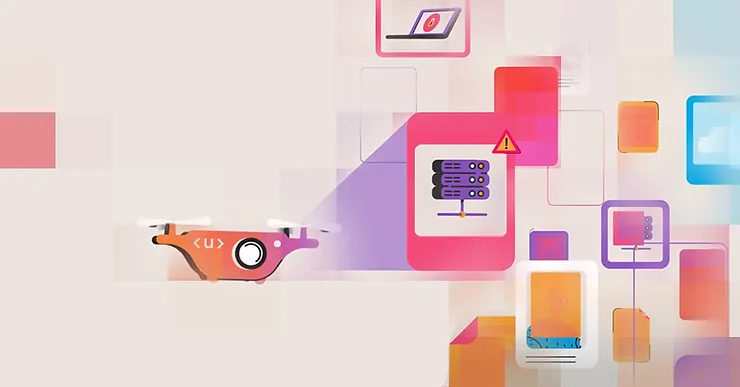Asset Discovery: What It Is and Its Importance in Modern Cybersecurity
Aug 20, 2021
Any component, whether physical or not, that constitutes a company's technology infrastructure is considered a digital asset. Domains, subdomains, servers, web applications, cloud services, and virtual machines are some examples of assets.
Having visibility over 100% of these assets is a challenge for companies of all sizes, from the most traditional ones with their complex IT infrastructure to the younger ones that, in the process of scaling, need to focus 100% on product evolution and do not have the bandwidth to manage the multitude of services available in the Cloud.
Not keeping track of all the digital assets of your company creates blind spots that significantly increase your attack surface - a term that refers to the sum of all cybersecurity risks that expose your business. Each unknown asset is a potential point that an attacker could exploit to gain access to your digital ecosystem.
The constant implementation of new technologies and sudden challenges, such as the rapid and massive adoption of remote work, results in an attack surface that is always changing, growing, and evolving. In this scenario, the practice of Asset Discovery gains increasing importance, a modern and proactive approach to cybersecurity that is based on the continuous monitoring of digital assets to mitigate risks and achieve secure scalability.
What is Asset Discovery?
It is the process of identifying and locating inactive or active digital assets continuously and automatically, whether they are known or unknown by your organization. Continuous discovery of digital assets allows for a living mapping of the vulnerabilities that expose your company and enables you to be alerted to any changes in your attack surface. In other words, as your attack surface grows, you are made aware of all the risks tied to it and have the information to act.
Asset Discovery allows your team to know where to act. If you cannot quickly track which of your digital assets are exposed, you could have the best security team in the world, but you will always be vulnerable to cyberattacks.
Why invest in Asset Discovery?
You in control of your entire ecosystem
Automating the discovery of digital assets gives companies confidence about their attack surface and level of exposure, allowing them to discover their vulnerabilities before attackers do. Additionally, it enables them to make smarter decisions based on automated prioritization and management of vulnerabilities.Gain efficiency
Continuously monitoring your digital assets allows security and/or technology teams to focus on mitigating the risks of the most important assets that genuinely threaten your company. Automation saves time, increases the efficiency of professionals, and allows your company to focus on what matters: growing the business.Secure scalability
As your digital ecosystem expands, your defense grows along with it. Automated Asset Discovery ensures that your response to potential security incidents can happen quickly, without necessarily impacting the team's ability to continue innovating.Stay compliant with LGPD
The LGPD establishes a series of rules regarding the processes for collecting, storing, and sharing information. Automated asset discovery allows you to have visibility into where data is being stored and what that data is; moreover, staying ahead of attackers enables the avoidance of security incidents that could lead to breaches.
How Unxpose provides constant visibility into digital assets
Unxpose operates from the discovery of digital assets to the correction and management of security flaws. The solution continuously and automatically monitors the cloud, servers, services, domains, subdomains, and web applications, seeking exposed digital assets. Thus, you discover in real time the potential risks to your company. Unxpose also identifies and prioritizes the vulnerabilities found in these assets automatically, provides an explanation of the potential impact of each of them, and shows accessible tutorials on how to fix them. This way, you can have continuous cataloging of your assets in a single platform and manage and correct the vulnerabilities found easily and without friction.

